Cycle culture / Cycling / Mobility
Mobility from a Sojourner’s Perspective
Claire Hargrove has been interning at Mobycon for the past two months, living in Delft, NL, and learning firsthand about the Dutch integrated mobility framework. With this new knowledge, the weekend trips she has taken have accidentally included an analysis of the mobility network and comparison to Dutch design. Since living in Delft and working at Mobycon, efficient and active transportation has become the norm. By visiting not just The Netherlands, but Denmark, she has been able to better visualize what makes the Dutch design so special.
I grew up in a neighborhood where mobility autonomy was derived from unpleasant sidewalks and cars. I now reside in a college town that is attempting to become less car-centric but still missing the mark. I visited The Netherlands for the first-time last summer on a school trip and attended a study tour led by Mobycon’s own Anna Wyner and Brett Petzer. Afterwards I was ‘Dutch-inspired’ and excited to get a bike to ride on campus, but quickly realized that it is neither as pleasant nor efficient as in The Netherlands.

A street in Chapel Hill, NC (with some of the best cycling infrastructure in town!)
Recently, I had the chance to visit some friends in Copenhagen where we biked nearly everywhere and had many other public transport options as well. Before working at Mobycon I did not realize there was such a difference between Dutch and Danish cycling infrastructure. After visiting Denmark, the differences are clear- despite both countries have created efficient, safe, and easy-to-use networks.
Some of the differences could be seen in the infrastructure design, while others were felt in the culture. Dutch cycling culture is exceptionally social and relaxed, having infrastructure that reflects this. Roundabouts, barriers between cycling and automobile lanes, and even ramped curbs all create a safer, yet social ambiance for users.
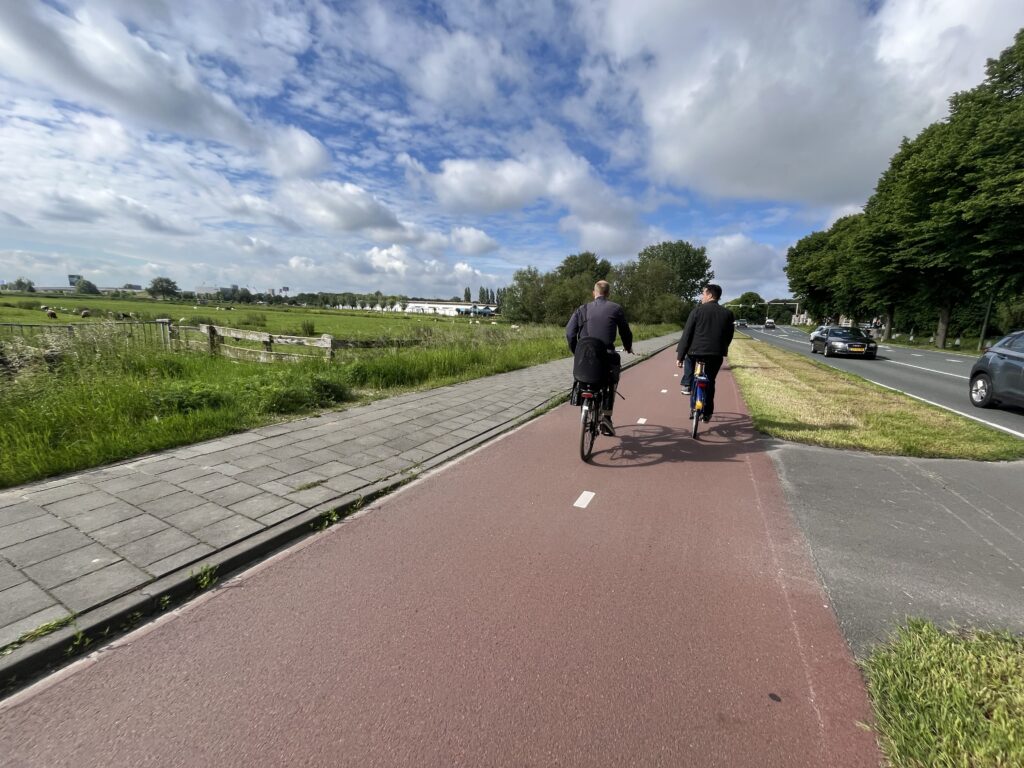
Cyclists in The Netherlands biking side-by-side and conversing.
In Denmark, the cycling culture felt more focused on getting to your destination quickly. People biked single-file and with urgency to get where they needed to. This culture was amplified by the curbs on either side of the cycling lane- making you feel resolved to that track, and unable to venture elsewhere.

Various mobility lanes in Copenhagen, Denmark
Raised cycle lanes or white lines adjacent to automobiles created the effect that you were cycling as an automobile. However, this feeling diminished whenever I made a left turn, as I had to cross the road and wait for the light twice- making me feel like a pedestrian instead.
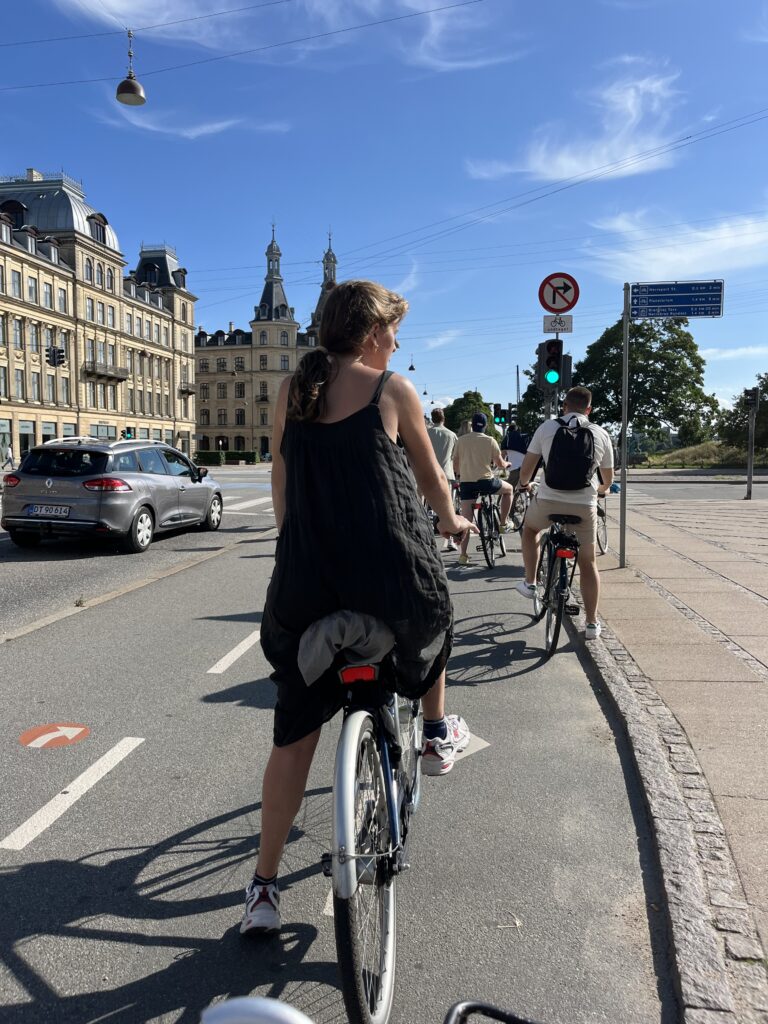
Cyclists waiting at an intersection in Copenhagen, Denmark
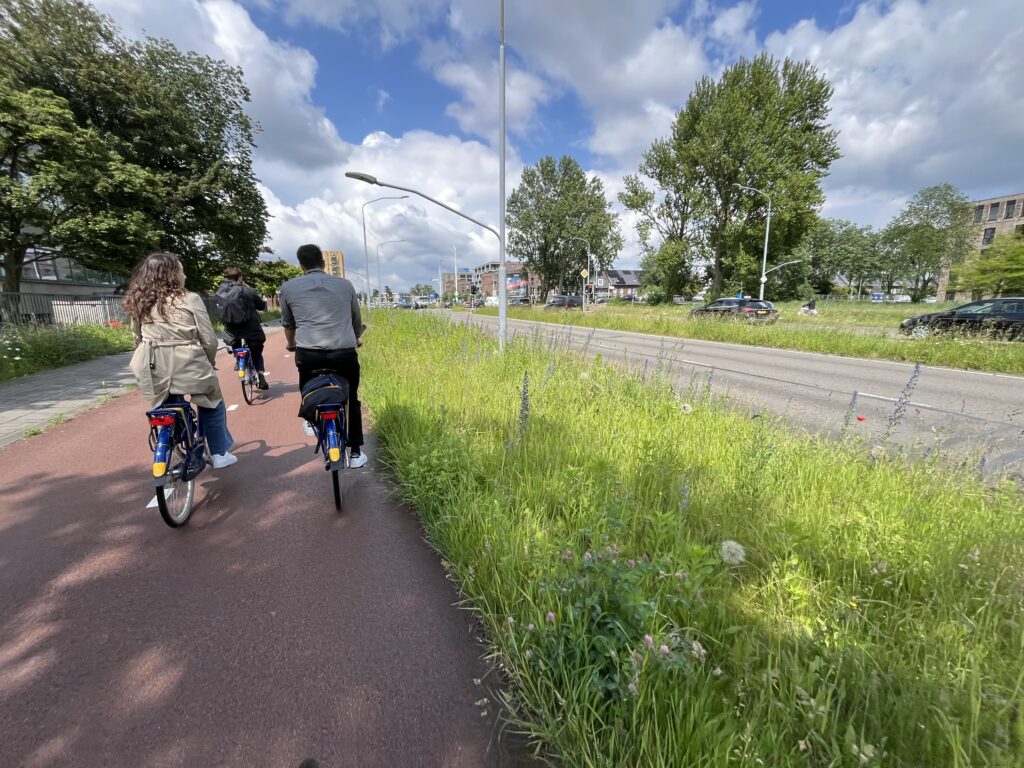
Additionally, the density of cyclists seemed to offer more protection than the infrastructure, this was apparent in the mostly one-way lanes, differing from the barriered separation in The Netherlands.
Cyclists in The Netherlands protected from high-speed traffic by an ecological barrier
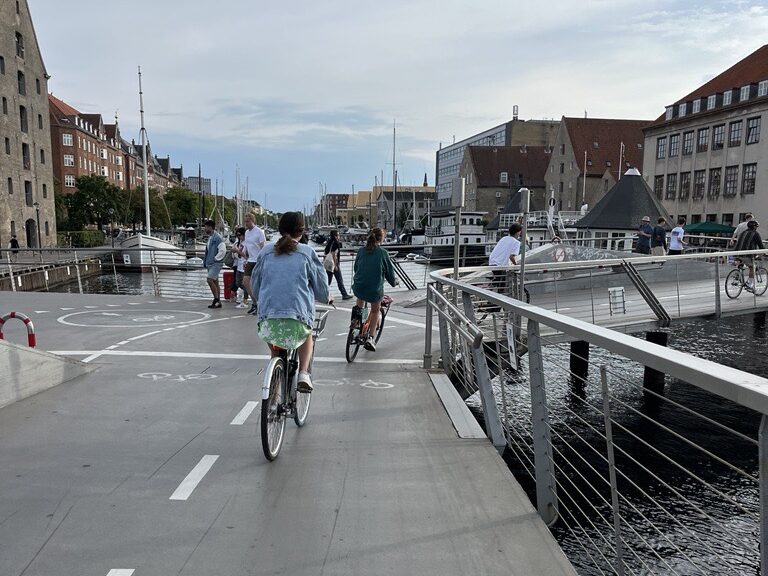
Cycling and pedestrian-only bridge in Copenhagen, Denmark
No doubt, Copenhagen knows what they are doing with fantastic cycling bridges and accessible bike-sharing programs. However, cycling around Copenhagen made me miss certain aspects that I have been accustomed to in The Netherlands.
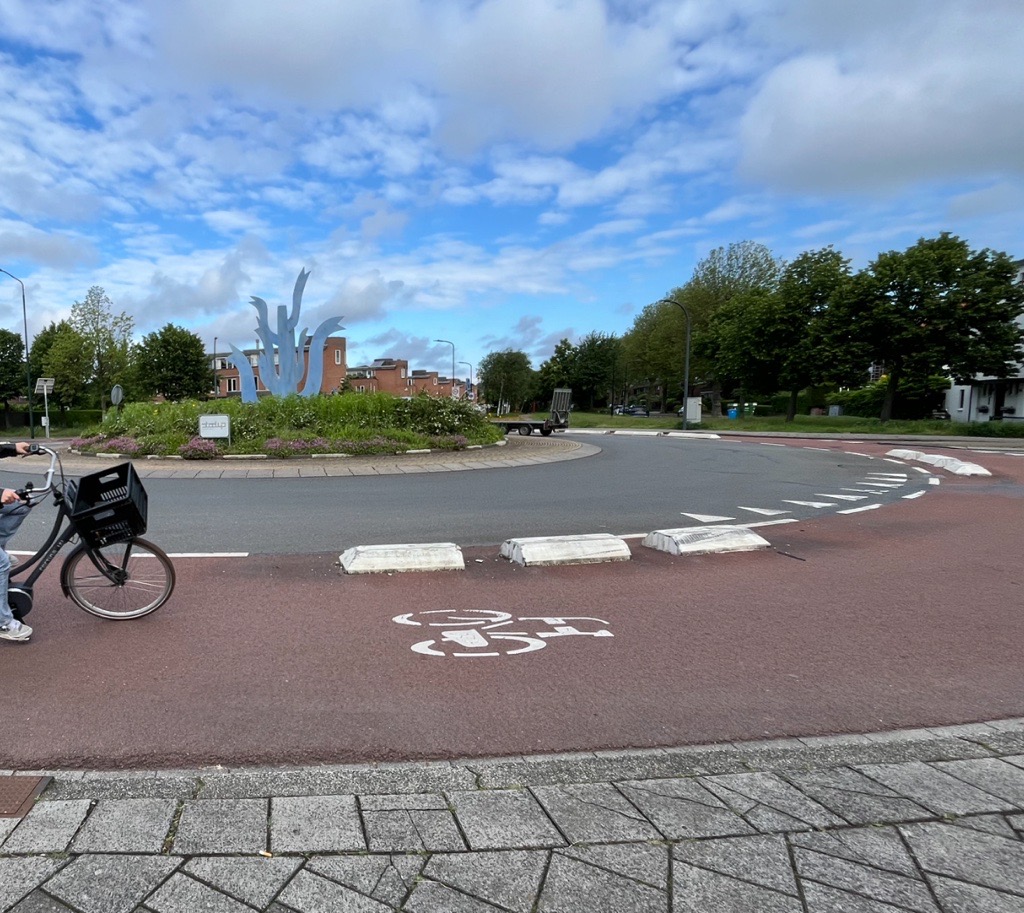
For example, the red-orange bike lanes far from cars that clearly tell me where to go, or the Dutch roundabouts that safely and efficiently allow me to turn left. Even the ramped curbs and their relaxed and inviting design was missed (mostly when I got too close to the raised curb)!
Roundabout in The Netherlands
Realizing all these factors, what the Dutch have mastered is not only their infrastructure but cycling culture. In the US, what would be accepted as a “quick 15-minute walk” is an easy bike ride in Delft. In Copenhagen, a quick, focused commute would turn into a social and relaxing journey. In The Netherlands, you can bike socially and simply take up space, where in other places, this is made to incorrect or unsafe. They even have a word for the type of culture they aspire to: fietsgeluk (cycling happiness).
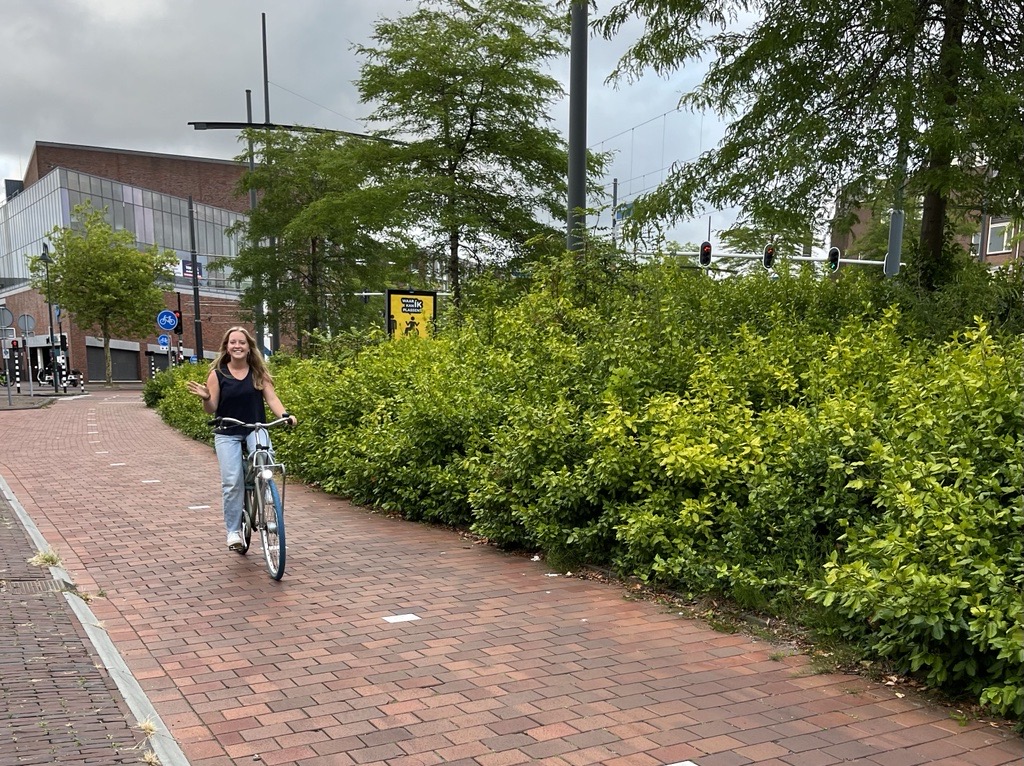
Claire cycling in Delft, the Netherlands
Regardless of where each place I have visited or lived stands with their current infrastructure, like the Dutch, I believe they should continue to seek progress in their mobility and its culture. Creating a place or even atmosphere where people desire to utilize these resources is a great first step to a larger mobility goal! I am excited to see how I can use my Dutch inspiration help to modify the mobility culture when I return home.

